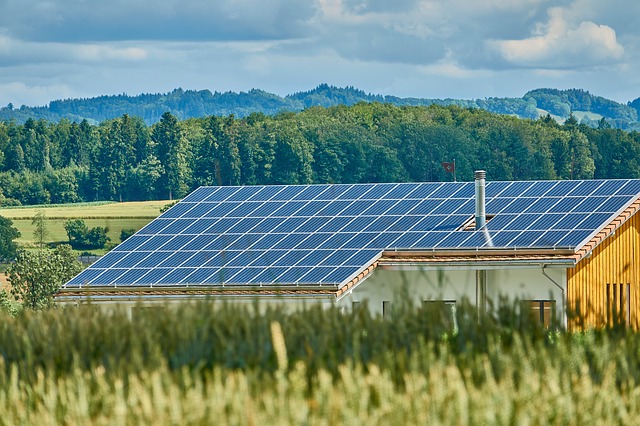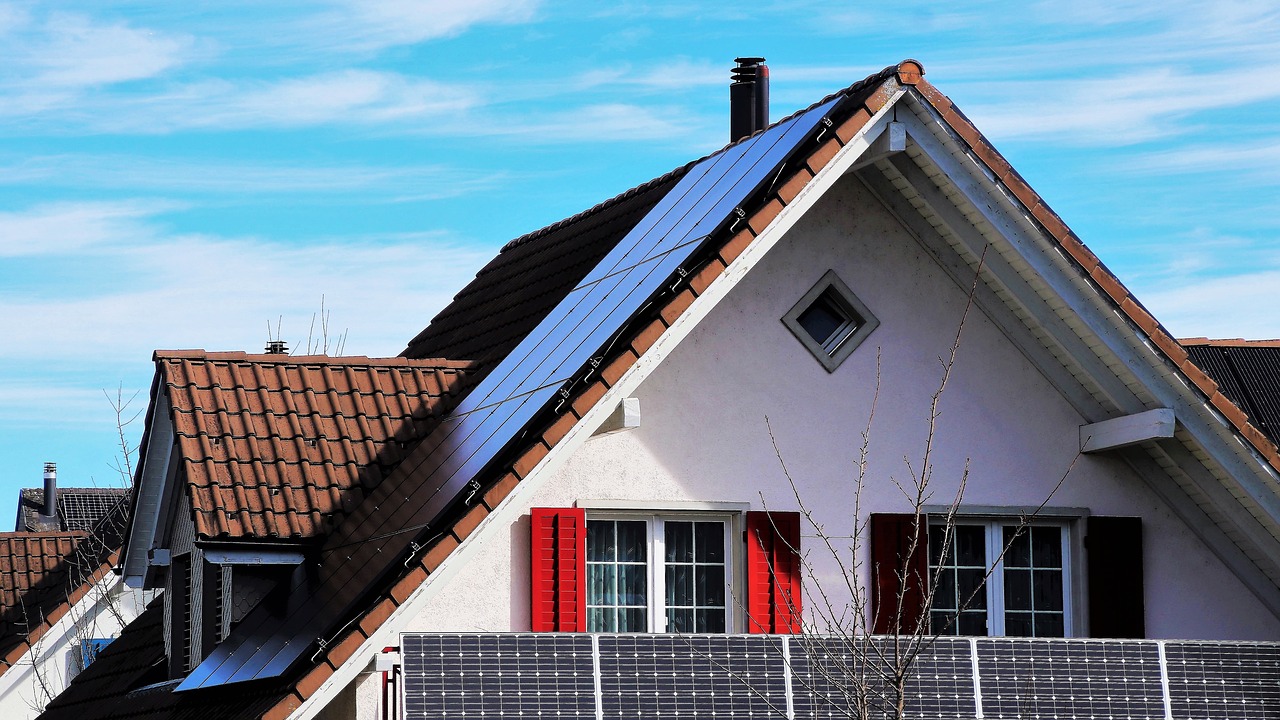29 July 2019, 11:29
By Syd Ulrich-Dogonniuck, Sustainability Content Writer for Realty Sage

If you ever studied Maslow’s Hierarchy of Needs in an intro Psychology or Humanities course you may recall that the first level of need is about the basics: food and water. Maslow said that after the basics were accounted for, then a person could move on to the next levels of personal betterment. But…in today’s day and age, as silly as it may sound, I’d honestly add electricity in to that first level of need.
People really do start to do crazy things when their lives aren’t powered up! I know people who will go to the ends of the earth to find a power outlet for their phone or laptop, and I know you’ve seen the mayhem that ensues if the AC goes down any time in August!!
Electricity is simply part of our lives; it is integral to how we work and live and play. The US Energy Information Administration calculated that the average US residential utility customer uses 10,339 kilowatthours (kWh) annually. This value obviously varies widely depending on time of year, weather, your climate, and the size of house. But on average, an American home uses 867 kWh a month. If you’re a visual person, like me, this may not really hit home because a kilowatthour isn’t particularly easy to imagine…Let me break it down for you:
What Electricity Really Looks Like
In 2018, according to the US Energy Information Administration about 63% of American electricity was generated from “fossil fuels” (think coal and natural gas), about 20% was generated in nuclear power plants (think Uranium), and 17% was generated through renewable sources (think hydropower, wind, solar, etc..)
Considering there are losses associated with transmitting electricity over extended distances it is much more efficient to use electricity that is produced locally. So unless you live near a nuclear facility, wind farm, or a large hydropower facility, there’s a very large chance that a majority of your energy comes from fossil fuels.
As an engineer, I can pinky-promise you that there are LOTS of factors that go into converting raw materials into electricity and getting it to your TVs and curling irons. But if you boil everything down, the simple result is that on average you can get 1 kWh for 1 lb of coal. Considering the average American home uses 867 kWh monthly, that means that each house on your street is using 867 pounds of coal every month!!
Coal to Cake: What It Really Takes to Bake
Since I’m a foodie, let’s use cake as an example to understand how much energy you need to do an everyday activity. You decide it’s a chocolate cake kind of day! You have an electric oven and you set it to 350 degrees. It has to heat up and then you have to bake the cake—so let’s say the oven is on for 1 hour. Typical electric ovens use around 2400 watts per hour on medium to high heat. So that one hour of bake time racks up 2.4 kilowatts of energy in one hour…which means it takes 2.4 pounds of coal to make 1 cake!!
As I said earlier, electricity is part of our twenty-first century, societal DNA at this point—we need it to power hospitals, to keep food from spoiling, for public transportation, and (of course) so we can bake more cakes! But we definitely need a better way to get the electricity. While electricity is useful and necessary, it also has serious, negative environmental impacts. Not only does the extraction of “fossil fuels” cause land and water degradation, but according to the Union of Concerned Scientists, the combustion process can emit harmful toxins into the air and the spent waste is equally toxic to both people and the environment.
A Sunnier Cake
As a result, many people have turned towards renewable energy sources, especially solar. While I think that curbing our electricity usage will do wonders for the environment, I think the long-term solution is not simply cutting back in energy usage, but also generating our energy in an entirely different way.

Looking on the Bright Side—Solar Solutions!
Personally, I think that solar energy is one of the best options for residential homeowners. It’s not that the other forms of renewable energy aren’t viable—if you live near water or have a large plot of land then by all means you should definitely look into hyrdo and/or wind power! But if you have a house, then you likely also have a roof and what’s up on the roof? In my case, absolutely nothing! So why not put that space to good use?
There are lots of reasons why converting to a solar energy system is a definite positive, but here are the top-hitters for someone (like myself) who loves the environment but isn’t made of money:
- No More Electric Bills
With the right size array for your needs and combination of an energy efficient home, you will no longer need to pay anyone else for the energy you use in your home. Basically: no more energy bills!! Your house is now self-sufficient, or nearly self-sufficient. The resource that goes into making your new, clean, energy is sunlight, and no one can charge you for what the sun freely gives.
- Solar Panels Pay for Themselves
Your solar array will pay for itself. Trust me on this. The initial price tag might give you a small heart-attack, but think about your current energy bill—let’s say you get a $100 electricity bill every month (in 2013 the Department of Energy reported the average energy bill per US residence was $110.21, but I know you’re better than average [and the math is easier] so we’ll just go with a round $100, cool?). And let’s say you get that same bill for the next twenty years. Ignoring inflation, that’s already $24,000!
After rebates and tax credits, the average 10 kWh solar array will cost about $20,860, so you still come out ahead!! If you purchase and install solar panels in 2019, federal tax credits actually cover 30% of equipment and installation costs, so keep that in mind when you are considering different systems!
- Cloudy? Not an Issue!
Many people worry that their solar panels won’t be useful if there isn’t full, direct sunlight. However, as solar panel technology has improved, this is no longer the case! Solar panels actually capture any light they can. So even if it’s completely overcast, your panels will still be creating energy for you, albeit at a much lower rate (between 10% and 25%).
- Sell Excess Energy Back to the Grid
Additionally, solar panels can actually make you more money. If you generate more electricity than you use in your home, many municipalities will pay you for the excess electricity your solar panels produced!!
- Sell Your House at a Premium, and Quickly!
And last, but definitely not least, if you decide you want to sell your solar house, the addition of solar panels will just help you further. Research has shown that homes with solar capacity typically sell at premium prices, adding approximately $15,000 to the selling price or more, and typically are on the market for fewer days than conventionally powered homes.
Finding the Right Solar
People want houses that are both move-in-ready and sustainable—so the addition of solar panels will give you even more brownie points with potential buyers.
As you start on your solar journey, you’ll see lots of options, honestly so many options it can be a little overwhelming. Luckily there are some great, free tools out there to help you if you are still trying to figure out what will work best for your house, for your climate, and your price point! Pick My Solar is a free, online platform that allows you to connect with an energy advisor who will help you understand your options, and then find licensed professionals in your area for the rest of the process. Pick My Solar typically sees 8 to 12 offers received for each solar installation project from different companies in your area, so you really do get to explore all of your options before you decide on just one!! Since it’s all online, you really can just “sit back, relax, and go solar!”
* This article contains affiliate links. Which means at no additional cost to you, if you click through and make a purchase, Realty Sage may earn revenue.
Recommended reading:
Energy-Saving, Smart Home Ideas For Your Wallet And The World
Solar System Ratings Give Agents Even More Marketing Options
Tag: real estate, home buyers, green homes, pick my solar, solar, savenia, eco-friendly homes, real estate agents, realtor, solar marketing, energy saving, smart home, energy efficient, money saving, renewable energy
#solarpanel #solar #renewables #energy #renewableenergy #solarenergy #solarpower #cleanenergy #gogreen #pickmysolar #offgrid #sustainability #greenenergy #climatechange #sustainableliving #realtysage
Back to news


